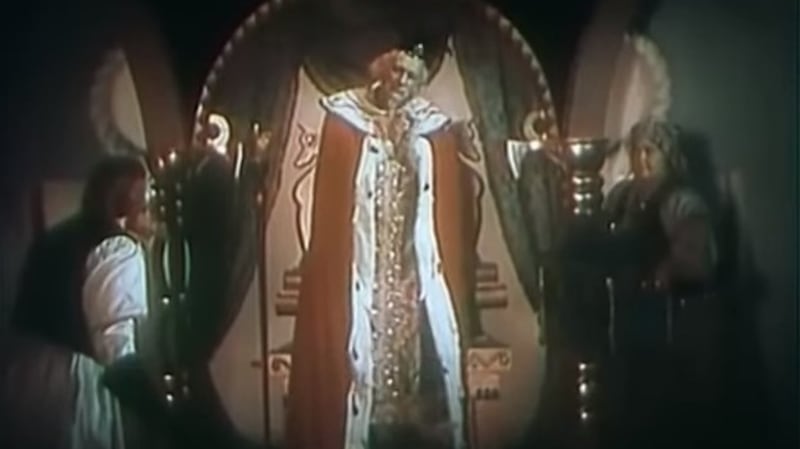In the early 1960s the Rowe family of Wexford placed an advert in a Soviet newspaper seeking to make contact with a cousin, Alexander, whom they believed resided somewhere in Russia. One of the family members who placed the advert, David Rowe, remembered "not really expecting that anyone would notice". But soon, Alexander Rou, as his Irish surname was styled in Russian, responded. This was how the Rowes of Wexford made contact with their long-lost cousin, by then a celebrated director of Soviet children's cinema.
The events that led an Irish family to search for their elusive Russian relative were set in motion many decades before when, in 1904, Arthur Rowe of Wexford town arrived in Russia on an assignment from a British flour mill manufacturing company. Arthur came from a family who, as historian Rosemary Raughter noted, were prominent members of the Wexford business community and Methodist congregation. Arthur's father Howard became a Lord Mayor of Wexford town, while his elder sister Louie M Coade would play a role in the campaign for women's suffrage. It was the family business - flour milling - which eventually took Arthur Rowe to Russia.

Rou marked out his own distinctive fairy-tale style from the very first feature he directed. For a revolutionary state that sought to transform a superstitious peasantry into the secular citizens of a new society, folk tales were unlikely candidates for official state approval
In Russia, Arthur met and married Yulia Karageorgii, a Greek woman who is believed to have been partly of Romani descent. On March 8, 1906, they had a son, Alexander who was destined to become one of the most beloved film directors of the Soviet era. The movies made by this Russo-Irish director - almost all of which were based on popular Russian folk tales - would be cherished by generations of children raised in the Soviet Union and the Eastern Bloc.
Part of Rou's childhood was spent in Sergiev Posad, a city surrounding a medieval monastery that has its own otherworldly atmosphere. He was raised on fairy tales, many told to him by his mother. Around 1909, Arthur took his wife Yulia and young Alexander to Ireland, where they met the Irish Rowes. It would be the first and only time the Rowes met their Russian family. According to Kira Paramonova, a contemporary of Rou, those who knew the Russo-Irish boy as a teenager saw in him a combination of ambition, poetic sensibilities and a repressed sadness. Alexander's childhood had its share of tragedy. A younger sibling George died in childhood. Then, when Alexander was only 10, his father returned permanently to Ireland, leaving his wife and surviving son behind in Russia.
Alexander overcame the adversity of his childhood and rose through the Soviet cultural world following the Russian Revolution of 1917. He began his theatrical career in 1921 as part of the Blue Blouse companies, a movement of avant-garde political theatre troupes that developed across the USSR throughout the 1920s. After graduating from film school in 1930, Rou began working for Mezhrabpomfilm Studio, a film studio aiming to counter Hollywood dominance by producing left-wing cinema.
Rou marked out his own distinctive fairy-tale style from the very first feature he directed. For a revolutionary state that sought to transform a superstitious peasantry into the secular citizens of a new society, folk tales were unlikely candidates for official state approval. Peter Rollberg notes that Rou's 1938 film On the Pike's Order, the first feature he directed, nonetheless "persuaded many sceptics, demonstrating that miracles, witches, and kings were compatible with the educational needs of a Communist society". Rou became a member of the Communist Party in 1943.
His 1964 film Morozko, released in an English-language dub in 1966 as "Jack Frost", remains a popular wintertime watch in Russia
Although Rou never visited Ireland after his childhood journey or publicly claimed an Irish identity, Russian-language writing on the director usually notes his Irish background. In 2011, some of Rou’s films were shown in his ancestral home of Wexford at a festival partly organised by the Soviet director’s first cousin David Rowe. Viktor Posudnevsky reported on the festival for the Irish Times.
Despite having some distinctly Soviet elements such as the inclusion of groups of young Communist Pioneers with their signature red neckties,Rou’s films are still watched to this day. His 1964 film Morozko, released in an English-language dub in 1966 as “Jack Frost”, remains a popular wintertime watch in Russia and former Eastern Bloc countries. An online version of the festive classic has amassed more than seven million views.
In 1968, Rou received the title People’s Artist of the RSFSR. He died in December 1973. Appropriately, his final residence was on Eisenstein Street, a Moscow street named after another famous Soviet director, Sergei Eisenstein, located close to the Gorky Film Studios where Rou worked.
This Extraordinary Emigrants article was written by Dr Maurice J Casey, DFAT Historian-in-Residence at EPIC The Irish Emigration Museum in Dublin’s Docklands, the interactive museum tells the story of how the Irish shaped and influenced the world.











